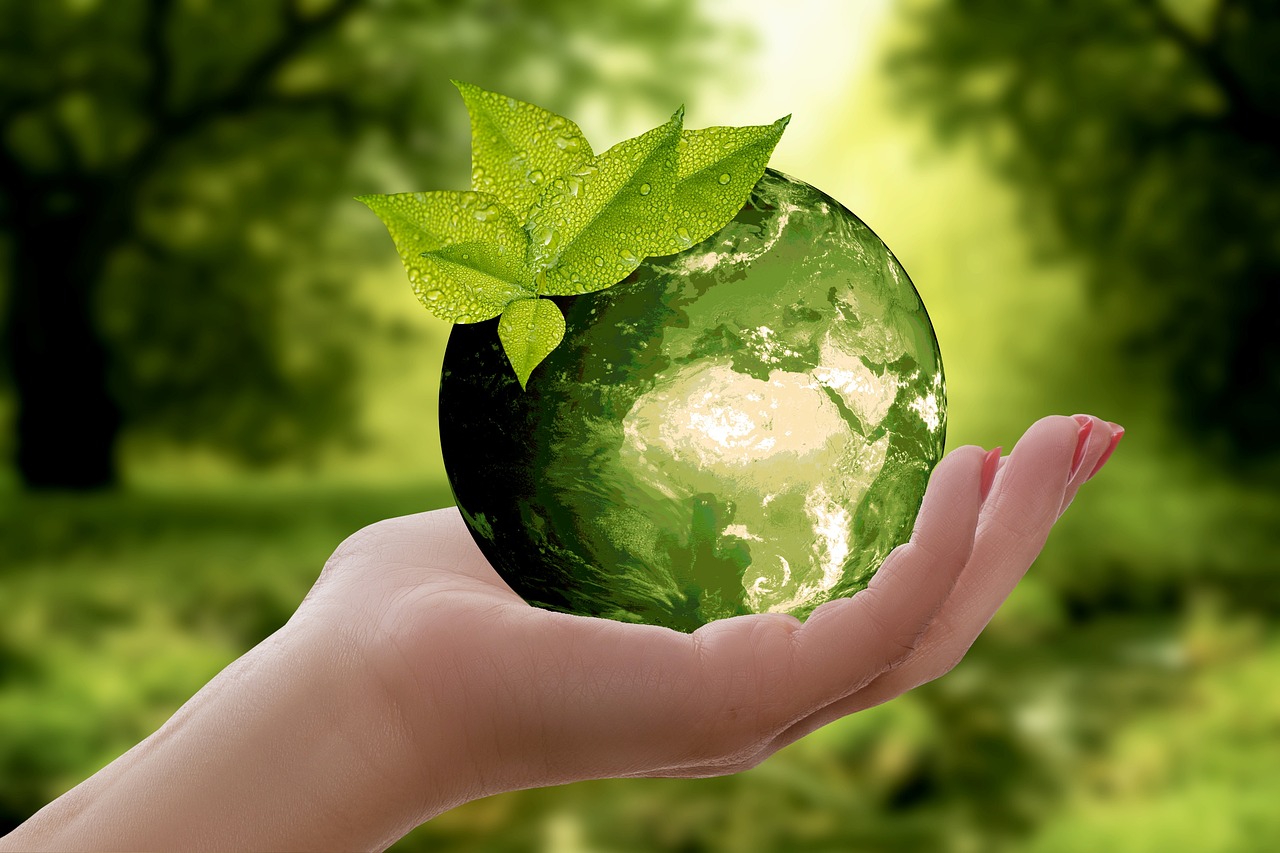How to Start a Sustainable Living Journey
Are you ready to take the plunge into sustainable living? It might sound daunting at first, but let me assure you, it’s a journey worth embarking on. Imagine a world where your daily choices contribute positively to the environment. That’s the essence of sustainable living—making conscious decisions that not only benefit you but also the planet. In this article, we’ll explore the essential steps to kickstart your sustainable living journey, providing you with practical tips and insights to help you make environmentally conscious choices in your everyday life.
Sustainable living is all about reducing your environmental impact and promoting a healthier planet for future generations. At its core, it revolves around the principles of sustainability, which include renewability, conservation, and responsibility. Think of it like a three-legged stool—if one leg is weak, the whole structure becomes unstable. By understanding these principles, you can appreciate why they are vital for our planet's health and future. The choices we make today can either harm or heal our ecosystem, and it’s crucial to lean towards the latter.
Before diving headfirst into changes, it’s essential to take a step back and evaluate your current habits. This self-assessment is like a roadmap—it helps you identify where you are and where you want to go. Ask yourself questions like, "How much waste do I produce?" or "Am I using resources efficiently?" By examining your lifestyle, you can pinpoint areas that need improvement. For instance, you might discover that you’re consuming more energy than necessary or relying heavily on disposable products.
Recognizing wasteful habits is key to starting your sustainable journey. Many of us are unaware of our daily practices that contribute to environmental degradation. Common culprits include excessive use of single-use plastics, leaving lights on when not in use, and overconsumption of water. Addressing these habits can significantly reduce your ecological footprint. For example, consider setting a reminder to turn off lights when you leave a room or investing in reusable shopping bags to cut down on plastic waste.
Single-use plastics are a significant contributor to pollution and can take hundreds of years to decompose. To minimize plastic use in your daily life, consider the following strategies:
- Switch to reusable bags: Always carry a reusable bag when shopping.
- Use a stainless steel or glass water bottle: This reduces the need for plastic bottles.
- Opt for bulk buying: Purchase items in bulk to reduce packaging waste.
By making these small changes, you can significantly decrease your reliance on single-use plastics.
Energy and water conservation are vital components of sustainable living. Simple actions can lead to significant savings and help protect our precious resources. Here are some tips:
- Switch off appliances: Unplug devices when not in use.
- Use energy-efficient bulbs: These consume less electricity and last longer.
- Take shorter showers: Reducing shower time can save gallons of water.
Implementing these eco-friendly practices at home not only reduces your bills but also contributes to a healthier planet.
Establishing clear, achievable goals can guide your sustainable living journey. Think of these goals as your personal sustainability roadmap. They should be specific, measurable, and realistic. For instance, you might set a goal to reduce your plastic waste by 50% over the next six months. Tracking your progress can keep you motivated and accountable. Remember, celebrating small victories along the way can make the journey enjoyable and fulfilling.
Every decision counts in sustainable living. From the food you eat to the products you buy, each choice contributes to your ecological footprint. Making informed decisions can lead to a more sustainable lifestyle. Consider the impact of your choices on the environment and strive to make selections that are beneficial not only to you but also to the planet.
Eating local and organic foods supports sustainable agriculture and reduces your carbon footprint. When you choose local produce, you’re not only supporting local farmers but also minimizing the environmental impact associated with transporting food over long distances. Plus, organic farming practices often promote biodiversity and soil health. Next time you’re at the grocery store, opt for items that are in season and locally sourced. Your taste buds—and the planet—will thank you!
Selecting eco-friendly products can significantly impact the environment. Look for items that are biodegradable, made from sustainable materials, or come in minimal packaging. Many brands are now committed to sustainability, making it easier for you to make responsible choices. Always read labels and do a bit of research to ensure you’re choosing products that align with your values.
Q: What is sustainable living?
A: Sustainable living involves making choices that reduce your environmental impact and promote a healthier planet.
Q: How can I start my sustainable living journey?
A: Begin by assessing your current lifestyle, identifying wasteful practices, and setting achievable sustainability goals.
Q: Why is it important to reduce single-use plastics?
A: Single-use plastics contribute significantly to pollution and can take hundreds of years to decompose, harming wildlife and ecosystems.
Q: How can I conserve energy at home?
A: Simple actions like turning off lights, using energy-efficient appliances, and unplugging devices can help conserve energy.

Understanding Sustainable Living
This article explores the essential steps to embark on a sustainable living journey, offering practical tips and insights to help individuals make environmentally conscious choices in their daily lives.
Sustainable living is not just a trendy phrase; it’s a lifestyle choice that can significantly impact our planet's health. At its core, sustainable living means making decisions that minimize your ecological footprint while enhancing your quality of life. Imagine living in harmony with nature, where your actions contribute positively rather than detract from the environment. This concept revolves around three fundamental principles: environmental protection, economic viability, and social equity.
Why is this important? Well, consider this: our planet is facing unprecedented challenges, from climate change to resource depletion. The choices we make today will determine the future for generations to come. By adopting sustainable practices, we can help mitigate these issues, ensuring that our natural resources are available for future generations. Think of it as being a good steward of the Earth—a caretaker who nurtures and protects rather than exploits.
Understanding sustainable living also involves recognizing the interconnectedness of our choices. For instance, when you choose to buy local produce, you are not only supporting your community's economy but also reducing the carbon emissions associated with transporting food over long distances. This ripple effect is what makes sustainable living so impactful. It's like dropping a pebble in a pond; the ripples spread out, affecting everything around it.
Now, let’s break down the key components of sustainable living:
- Resource Conservation: This involves using resources wisely and minimizing waste. Simple actions like recycling and composting can make a big difference.
- Energy Efficiency: Reducing energy consumption not only lowers your bills but also decreases your carbon footprint. Think about switching to LED bulbs or using energy-efficient appliances.
- Social Responsibility: Supporting fair trade and ethical businesses ensures that your consumption choices contribute to the well-being of others.
In essence, sustainable living is about making conscious decisions that align with your values and the well-being of our planet. It’s a journey that requires reflection, commitment, and creativity. As you embark on this path, remember that every little bit helps. Whether it’s choosing to walk instead of drive or opting for reusable bags, each step contributes to a larger movement towards sustainability.
Before making changes, it's important to evaluate your current habits. This section guides you through assessing your lifestyle and identifying areas for improvement toward sustainability.
Recognizing wasteful habits is key to starting your sustainable journey. This subheading highlights common practices that contribute to environmental degradation and how to address them.
Single-use plastics are a significant contributor to pollution. This section provides strategies for minimizing plastic use in your daily life and opting for sustainable alternatives.
Energy and water conservation are vital components of sustainable living. This section offers tips on how to reduce consumption and implement eco-friendly practices at home.
Establishing clear, achievable goals can guide your sustainable living journey. This subheading discusses how to set and track your sustainability objectives effectively.
Every decision counts in sustainable living. This section explores practical choices you can make in areas like food, transportation, and consumer products to reduce your ecological footprint.
Eating local and organic foods supports sustainable agriculture. This subheading explains the benefits of sourcing food responsibly and how to make informed choices at the grocery store.
Selecting eco-friendly products can significantly impact the environment. This section provides guidance on identifying and choosing sustainable products for your home and personal care.
1. What is the easiest way to start living sustainably?
Start small! Begin by reducing single-use plastics, conserving water, and recycling. Every little change adds up.
2. How can I make sustainable choices when shopping?
Look for products with minimal packaging, choose local and organic options, and support brands committed to sustainability.
3. Is sustainable living expensive?
While some sustainable products may have a higher upfront cost, they often save you money in the long run through energy savings and reduced waste.
4. Can I live sustainably in a city?
Absolutely! Urban areas offer unique opportunities for sustainable living, such as access to public transportation, farmers' markets, and community gardens.

Assessing Your Current Lifestyle
Before diving headfirst into the world of sustainable living, it's crucial to take a moment and reflect on your current lifestyle. Think of it as taking a snapshot of where you are right now; without this clarity, how can you know where to go? Assessing your habits and routines is the first step toward making meaningful changes that benefit both you and the planet. It's like cleaning out your closet before buying new clothes—you need to know what you have before you can decide what to keep or toss.
Start by examining your daily routines. Are there areas where you might be contributing to waste or inefficiency? For instance, consider your consumption patterns—how much energy do you use daily? Are you aware of the products you buy and their environmental impact? This self-assessment will help you identify the most pressing areas for improvement. You might be surprised to find that small changes can lead to significant benefits over time.
One effective way to evaluate your lifestyle is by keeping a journal for a week. Document your daily activities, purchases, and waste output. This simple act can shine a light on your habits and reveal patterns you might not have noticed before. Ask yourself questions like:
- How often do I use single-use plastics?
- Am I mindful of my energy consumption at home?
- Do I prioritize local and organic foods when shopping?
Once you've gathered this information, take a moment to reflect on your findings. Are there any "aha" moments? Perhaps you discovered that you rely heavily on takeout containers or that your water bill is higher than expected due to long showers. Recognizing these habits is essential because it empowers you to make informed decisions moving forward. In this way, assessing your current lifestyle is not just about identifying problems; it's also about uncovering opportunities for improvement.
Another useful method is to categorize your habits into different areas of your life, such as:
| Category | Current Habit | Potential Improvement |
|---|---|---|
| Food | Frequent takeout | Meal prepping and cooking at home |
| Transportation | Driving alone | Carpooling or using public transport |
| Waste Management | Using single-use plastics | Switching to reusable bags and containers |
By laying out your habits in this way, you can clearly see where your lifestyle might be falling short and where you can make impactful changes. Remember, the goal isn't to overhaul your entire life overnight—sustainable living is a journey, not a sprint. Start small, set realistic goals, and celebrate your progress along the way.
In conclusion, assessing your current lifestyle is a vital step in your sustainable living journey. It allows you to pinpoint areas for improvement and develop a roadmap for change. So grab that journal, take a good look at your habits, and prepare to embark on an exciting journey toward a more sustainable future!
Q: Why is it important to assess my current lifestyle before making changes?
A: Assessing your lifestyle helps you identify specific habits that may be contributing to environmental issues. This awareness allows you to set targeted goals for improvement.
Q: How can I effectively track my habits?
A: Keeping a daily journal or using apps designed for habit tracking can help you monitor your routines and make adjustments as needed.
Q: What are some small changes I can start with?
A: Consider reducing your use of single-use plastics, conserving water, and opting for public transportation or biking when possible.

Identifying Wasteful Practices
To embark on a sustainable living journey, the first step is to identify wasteful practices that have crept into your daily routine. We often go about our lives without realizing how our choices impact the environment. Think of it like cleaning out a cluttered closet; you can't organize it until you see what you have. Similarly, recognizing the habits that contribute to environmental degradation is crucial for making meaningful changes.
One of the most significant areas to examine is your consumption of single-use plastics. These items, which include plastic bags, straws, and water bottles, are used for only a brief moment but can take hundreds of years to decompose. Have you ever considered how many times you reach for a plastic bottle instead of a reusable one? It's easy to overlook, but every small choice adds up. By swapping out single-use items for reusable alternatives, you can dramatically reduce your plastic footprint.
Another common wasteful practice is overconsumption of resources. This includes everything from energy and water to food. Have you ever left the lights on in a room you’re not using? Or let the water run while brushing your teeth? These seemingly minor actions contribute to a larger problem. By becoming more mindful of your resource usage, you can make significant strides toward sustainability. For instance, consider implementing simple changes like turning off lights when you leave a room or using a glass of water instead of letting the tap run.
Additionally, food waste is a major issue that many people overlook. Did you know that approximately one-third of all food produced globally is wasted? This not only squanders the resources used to grow and transport food but also contributes to greenhouse gas emissions when wasted food ends up in landfills. To combat this, start by assessing your grocery shopping habits. Are you buying more than you can consume? Keeping a food diary can help you track what you buy versus what you actually eat, allowing you to make more informed decisions in the future.
As you begin to recognize these wasteful practices, consider keeping a journal or a checklist. Documenting your habits can help you visualize areas needing improvement. You might even discover surprising patterns, like how often you grab takeout instead of cooking at home. The key is to be honest with yourself and open to change. Remember, the goal isn't to achieve perfection overnight but to take small, consistent steps toward a more sustainable lifestyle.
In summary, identifying wasteful practices is an essential first step in your journey toward sustainable living. By becoming aware of your consumption habits, you can start making informed choices that not only benefit the environment but also enhance your quality of life. Every small change counts, and together, these changes can lead to a significant positive impact on our planet.
- What are some common wasteful practices? Common wasteful practices include using single-use plastics, overconsuming resources like water and energy, and wasting food.
- How can I reduce my plastic usage? You can reduce plastic usage by opting for reusable bags, bottles, and containers, and avoiding products with excessive plastic packaging.
- Why is food waste a problem? Food waste contributes to resource waste and greenhouse gas emissions, making it crucial to minimize waste by planning meals and using leftovers.
- What is the best way to track my habits? Keeping a journal or using a checklist can help you monitor your consumption habits and identify areas for improvement.

Reducing Single-Use Plastics
In our fast-paced world, single-use plastics have become a common convenience, but they come at a hefty price to our environment. Did you know that millions of tons of plastic waste end up in oceans and landfills each year? It’s a staggering thought, isn’t it? Reducing single-use plastics is one of the most impactful changes you can make in your journey towards sustainable living. So, how can you start making a difference today?
First, it’s essential to understand what constitutes single-use plastics. These are items designed to be used once and discarded, such as plastic bags, straws, cutlery, and water bottles. Instead of reaching for these items, consider the alternatives that not only reduce waste but also promote a more sustainable lifestyle. For instance, investing in a reusable water bottle can save you money and significantly cut down on plastic waste. Imagine the impact if everyone switched from disposable plastic bottles to a reusable one!
Here are some practical strategies to help you minimize single-use plastics in your daily life:
- Bring Your Own Bags: Always carry reusable shopping bags when you go grocery shopping. This simple habit can drastically reduce the number of plastic bags that end up in landfills.
- Say No to Straws: If you enjoy sipping your drinks through a straw, opt for reusable metal or silicone straws instead. It’s a small change that can make a big difference.
- Choose Bulk Items: Buying in bulk not only saves you money but also reduces the amount of plastic packaging you bring home. Look for stores that offer bulk bins for grains, nuts, and other staples.
- Support Plastic-Free Alternatives: Many companies now offer eco-friendly alternatives to common plastic products. For example, bamboo toothbrushes and beeswax wraps can replace their plastic counterparts.
Moreover, educating yourself and others about the consequences of plastic pollution can amplify your efforts. Share your knowledge with friends and family, and encourage them to join you in your sustainable living journey. Together, we can create a ripple effect that inspires more people to take action against plastic waste.
Lastly, don’t underestimate the power of small changes. Every little effort counts, and when combined, they can lead to significant reductions in plastic consumption. Start with one change, make it a habit, and then add another. Before you know it, you’ll be well on your way to a lifestyle that not only benefits you but also protects our beautiful planet for future generations.
Q: What are some easy alternatives to single-use plastics?
A: Some easy alternatives include using reusable shopping bags, stainless steel or glass water bottles, metal straws, and beeswax wraps instead of plastic wrap.
Q: How can I encourage my community to reduce plastic use?
A: You can organize community clean-up events, host workshops on sustainable living, or start a social media campaign to raise awareness about the impacts of plastic pollution.
Q: Are there any apps that can help me track my plastic use?
A: Yes! There are several apps available that can help you track your plastic consumption and suggest alternatives. Some popular options include "My Plastic Diary" and "Zero Waste Home."

Conserving Energy and Water
When it comes to sustainable living, is like giving a high-five to Mother Earth. Imagine your home as a cozy little planet, and every drop of water and every watt of energy is a precious resource that needs to be cherished. Not only does conserving these resources help the environment, but it also saves you money in the long run. So, how do you start this journey? Let’s dive in!
First off, let’s talk about energy. One of the easiest ways to conserve energy is by being mindful of your electricity usage. Simple changes can make a huge difference. For instance, consider switching to LED light bulbs, which use up to 75% less energy than traditional incandescent bulbs. And don’t forget to turn off lights when you leave a room! It’s like closing the fridge door after grabbing a snack—every little bit counts.
Another great tip is to unplug devices when they’re not in use. You might be surprised to learn that appliances and electronics still consume energy even when they’re turned off. This phenomenon is known as phantom load. By unplugging chargers, laptops, and other devices, you can reduce your energy consumption significantly. You can even use power strips to make this easier; just switch off the entire strip when you’re done!
Now, let’s not forget about water. Conserving water is equally vital, and there are countless ways to do it without sacrificing comfort. Start by fixing any leaks in your home. A dripping faucet might seem trivial, but it can waste gallons of water over time. According to the EPA, fixing leaks can save you around 10% on your water bill!
Another effective way to conserve water is by being mindful of your shower habits. Did you know that taking shorter showers can save you up to 2.5 gallons of water every minute? Consider setting a timer or using a water-efficient showerhead to help you stay on track. Additionally, turning off the tap while brushing your teeth can save around 4 gallons of water each day. It’s like finding money in your pocket—you didn’t realize it was there until you looked!
For those who enjoy gardening, consider implementing xeriscaping techniques, which involve using drought-resistant plants and minimizing lawn areas. This not only reduces water consumption but also creates a beautiful, low-maintenance landscape. And if you really want to go the extra mile, consider collecting rainwater in barrels for watering your garden.
In conclusion, conserving energy and water is a crucial step on your sustainable living journey. By making small, conscious choices, you can significantly reduce your ecological footprint while saving money. Remember, every little effort counts, and soon enough, you’ll find that your home is not just a place to live, but a sanctuary for the environment!
- How can I easily track my energy and water usage? You can use smart meters or apps that connect to your utilities to monitor your consumption in real-time.
- Are energy-efficient appliances worth the investment? Absolutely! They may have a higher upfront cost, but they save you money on bills over time and often last longer.
- What are some low-cost ways to conserve water? Simple actions like fixing leaks, taking shorter showers, and using a broom instead of a hose to clean driveways can help.

Setting Sustainable Goals
Embarking on a sustainable living journey is like setting sail on a vast ocean; without a clear destination, you may drift aimlessly. That’s why is crucial. These goals act as your compass, guiding you toward a more environmentally friendly lifestyle. But how do you go about establishing these goals? It’s simpler than you might think!
First off, it’s essential to understand what you want to achieve. Are you aiming to reduce your carbon footprint, minimize waste, or perhaps conserve water? By pinpointing your objectives, you can create a roadmap that aligns with your values and lifestyle. For instance, if you’re passionate about reducing plastic waste, your goals might include eliminating single-use plastics from your daily routine. This could mean investing in reusable bags, bottles, and containers.
Next, make your goals SMART—Specific, Measurable, Achievable, Relevant, and Time-bound. This framework helps ensure that your goals are clear and attainable. Here’s a quick breakdown:
| Criteria | Description |
|---|---|
| Specific | Your goal should be well-defined. Instead of saying, "I want to recycle more," try "I will recycle all my plastic bottles." |
| Measurable | Make sure you can track your progress. For example, "I will reduce my energy consumption by 20% over the next six months." |
| Achievable | Your goals should be realistic. If you currently use plastic bags daily, aiming to go completely plastic-free in a week might be too ambitious. |
| Relevant | Your goals should align with your values and lifestyle. If you love gardening, you might set a goal to start a compost bin. |
| Time-bound | Set a deadline for your goals. For instance, "I will switch to eco-friendly cleaning products by the end of the month." |
Once you have your SMART goals in place, it’s time to track your progress. Keeping a journal or using an app can help you monitor your achievements and stay motivated. Celebrate your victories, no matter how small they may seem! Every step you take toward sustainability contributes to a healthier planet.
In addition to tracking, consider sharing your goals with friends or family. This creates a support system and can inspire others to join you on your sustainable journey. You might even set up a friendly competition to see who can achieve their goals first. Remember, sustainability is not just a personal journey; it's a collective effort. The more people involved, the greater the impact!
Ultimately, setting sustainable goals is about making conscious choices that benefit not just you, but the planet as well. So grab that compass, chart your course, and let your sustainable adventure begin!
- What are sustainable goals? Sustainable goals are specific objectives aimed at reducing environmental impact and promoting eco-friendly practices in daily life.
- How can I track my sustainable goals? You can track your goals through journals, mobile apps, or even by creating a visual chart to monitor your progress.
- Why is it important to set sustainable goals? Setting sustainable goals helps you stay focused on your environmental objectives, making it easier to implement changes in your lifestyle.
- Can I involve others in my sustainable goals? Absolutely! Sharing your goals with friends or family can create a support network and encourage collective action toward sustainability.

Making Sustainable Choices
Every decision counts when it comes to sustainable living. It’s like building a puzzle; each piece, no matter how small, contributes to the bigger picture of a healthier planet. You might be wondering, “Where do I even begin?” Well, let’s break it down into manageable steps that can make a significant impact on your ecological footprint.
First off, consider your food choices. Eating locally sourced and organic foods is not just a trend; it’s a powerful way to support sustainable agriculture. When you choose local produce, you’re not only reducing the carbon emissions associated with transporting food over long distances, but you’re also supporting your community’s economy. Plus, organic farming practices are designed to be more environmentally friendly, avoiding harmful pesticides and promoting biodiversity. So, next time you’re at the grocery store or a farmer’s market, ask yourself: “Is this food local? Is it organic?” Your choices can foster a healthier ecosystem.
But it doesn’t stop there! Think about the products you bring into your home. Opting for eco-friendly products is another essential step in your sustainable journey. This means choosing items made from sustainable materials, products that are biodegradable, or those that come with minimal packaging. For instance, when shopping for personal care items, look for brands that emphasize sustainability in their production processes. The impact of these choices can be profound. Not only do they reduce waste, but they also promote a culture of sustainability within the marketplace. Remember, every time you choose an eco-friendly product, you're casting a vote for a cleaner environment.
Additionally, let’s not overlook transportation. How you get around can significantly affect your carbon footprint. If you can, consider walking, biking, or using public transportation instead of driving. Not only does this reduce emissions, but it also promotes a healthier lifestyle. If you must drive, try to carpool or invest in a fuel-efficient vehicle. It’s all about making conscious choices that align with your values.
In essence, making sustainable choices is about being mindful of your consumption patterns and their environmental impact. It’s about asking questions and seeking out alternatives that align with a sustainable lifestyle. Remember, it’s a journey, not a race. Start small, and gradually incorporate more sustainable practices into your life. You’ll be surprised at how quickly these changes can add up to make a big difference!
- What are some easy steps to start living sustainably?
Start by reducing plastic use, conserving water and energy, and choosing local foods. Small changes can lead to significant impacts!
- Are eco-friendly products more expensive?
While some eco-friendly products may have a higher upfront cost, they often save money in the long run due to their durability and efficiency.
- How can I encourage others to make sustainable choices?
Share your journey and the benefits you’ve experienced. Lead by example and create a community that values sustainability.

Choosing Local and Organic Foods
Embracing the practice of is not just a trend; it's a powerful way to contribute to a healthier planet and a healthier you. When you opt for local produce, you’re not only supporting your community's farmers, but you’re also reducing the carbon footprint associated with transporting food over long distances. Think about it: when you buy an apple that traveled hundreds of miles, you're not just paying for the fruit; you're also paying for the fuel that got it to your plate. By choosing local, you’re making a statement that you care about the environment and the economy.
Organic foods, on the other hand, are cultivated without synthetic pesticides and fertilizers, which means they’re better for both your health and the ecosystem. Consuming organic produce can help reduce your exposure to harmful chemicals that are often found in conventionally grown foods. It's like choosing a refreshing glass of pure water over a sugary soda—one is nourishing and revitalizing, while the other can leave you feeling sluggish. So, why not make the switch?
When shopping for local and organic foods, consider visiting farmers' markets or joining a community-supported agriculture (CSA) program. These options allow you to buy directly from the growers, ensuring that your food is fresh and in-season. Plus, you get the chance to meet the people who grow your food, creating a more personal connection to what you eat. If you’re unsure where to find local markets, a quick search online or a chat with neighbors can lead you to hidden gems in your area.
Here are some compelling reasons to choose local and organic foods:
- Freshness: Local foods are typically harvested at their peak ripeness, meaning they’re tastier and more nutritious.
- Seasonality: Eating with the seasons not only enhances flavor but also encourages a diverse diet.
- Environmental Impact: Reducing transportation emissions helps lower your overall carbon footprint.
- Support for Local Economy: Your purchases help sustain local farmers and businesses.
- Community Connection: Engaging with local producers fosters a sense of community and shared responsibility.
Incorporating local and organic foods into your diet doesn’t have to be overwhelming. Start small—perhaps by committing to buy one or two items each week from a local source. As you become more comfortable, you can expand your efforts. Remember, every little step counts in the journey towards sustainability. By making conscious choices about what you eat, you’re not only nourishing your body but also taking a stand for the planet.
Q: Why is it important to choose local foods?
A: Choosing local foods reduces transportation emissions, supports local economies, and ensures fresher produce.
Q: What are the benefits of organic foods?
A: Organic foods are grown without synthetic chemicals, which can be better for your health and the environment.
Q: How can I find local farmers' markets?
A: You can search online for farmers' markets in your area or ask your neighbors for recommendations.
Q: Is organic food more expensive?
A: While organic foods can be pricier, buying directly from local farms or markets can often provide more affordable options.
Q: Can I grow my own organic food?
A: Absolutely! Growing your own organic vegetables and herbs is a rewarding way to ensure you have fresh produce while reducing your ecological footprint.

Opting for Eco-Friendly Products
When it comes to making sustainable choices, opting for eco-friendly products is a game changer. Imagine walking through a store, and instead of reaching for the usual brands, you find yourself gravitating towards items that not only meet your needs but also align with your values. This shift in mindset is crucial in today's world, where our purchasing decisions can either contribute to environmental degradation or help heal our planet. By choosing eco-friendly products, you're not just buying items; you're investing in a healthier future.
But what exactly makes a product eco-friendly? Generally, these are products that are made from sustainable materials, produced with minimal environmental impact, and designed to be biodegradable or recyclable. For instance, consider the difference between conventional cleaning supplies and their eco-friendly counterparts. Traditional cleaners often contain harsh chemicals that can be harmful to both your health and the environment. In contrast, eco-friendly cleaners use natural ingredients that are effective yet gentle on our planet.
Here are some key factors to consider when selecting eco-friendly products:
- Materials: Look for products made from organic, non-toxic, and renewable resources.
- Packaging: Choose items with minimal or recyclable packaging to reduce waste.
- Certifications: Seek out certifications such as USDA Organic, Energy Star, or Fair Trade to ensure products meet environmental standards.
One of the most significant areas where you can make a difference is in your personal care routine. From shampoos to lotions, many conventional beauty products contain synthetic chemicals that can be harmful. By opting for eco-friendly personal care products, you not only protect your skin but also reduce the amount of toxic runoff that enters our waterways. Brands that focus on sustainability often highlight their commitment to using natural ingredients and environmentally friendly practices, making it easier for you to make informed choices.
Moreover, consider the impact of your choices on household items. For example, switching to biodegradable trash bags or using reusable kitchen towels instead of paper towels can significantly cut down on waste. These small changes may seem insignificant, but collectively, they can lead to substantial reductions in your ecological footprint. It's like planting a seed; it may take time to see the full impact, but with consistent nurturing, it can grow into something beautiful.
Another exciting aspect of choosing eco-friendly products is the rise of innovative companies dedicated to sustainability. Many brands today are committed to transparency, providing detailed information about their sourcing and manufacturing processes. This not only empowers you as a consumer but also encourages other companies to adopt more sustainable practices. By supporting these brands, you're contributing to a larger movement toward a more sustainable economy.
In conclusion, opting for eco-friendly products is a powerful way to embrace sustainable living. Each purchase you make is a vote for the kind of world you want to live in. So next time you reach for a product, take a moment to consider its environmental impact. Remember, every small change adds up, and your choices can inspire others to follow suit.
Q: What are some examples of eco-friendly products?
A: Eco-friendly products include biodegradable cleaning supplies, organic personal care items, reusable shopping bags, and sustainably sourced food products.
Q: How can I identify truly eco-friendly brands?
A: Look for certifications, read labels, and research the company's practices regarding sustainability and environmental impact.
Q: Are eco-friendly products more expensive?
A: While some eco-friendly products may have a higher upfront cost, they often save money in the long run due to their durability and effectiveness.
Q: Can I make my own eco-friendly products?
A: Absolutely! Many household and personal care products can be made at home using natural ingredients like vinegar, baking soda, and essential oils.
Frequently Asked Questions
- What is sustainable living?
Sustainable living refers to making choices that minimize your environmental impact. It’s about living in a way that meets your needs without compromising the ability of future generations to meet theirs. Think of it as a lifestyle that embraces harmony with nature!
- How can I assess my current lifestyle for sustainability?
Start by evaluating your daily habits. Take a look at your consumption patterns, waste production, and resource usage. Ask yourself questions like, "How much plastic do I use?" or "Am I conserving energy at home?" This self-reflection is your first step towards a more sustainable lifestyle.
- What are some common wasteful practices to avoid?
Common wasteful practices include excessive use of single-use plastics, wasting food, and leaving lights on in unoccupied rooms. By recognizing these habits, you can begin to make changes that significantly reduce your environmental footprint.
- How can I reduce my use of single-use plastics?
Start by carrying reusable bags, using a refillable water bottle, and opting for bulk items instead of individually packaged products. Every small change adds up, turning the tide against plastic pollution!
- What are some effective ways to conserve energy and water at home?
To conserve energy, consider switching to LED bulbs, unplugging devices when not in use, and using energy-efficient appliances. For water conservation, fix leaks, install low-flow fixtures, and practice mindful water usage during daily routines.
- How do I set sustainable goals?
Start by identifying specific areas where you want to improve, like reducing waste or increasing recycling. Make your goals SMART—Specific, Measurable, Achievable, Relevant, and Time-bound. Track your progress and celebrate your successes along the way!
- Why are local and organic foods better for sustainability?
Local and organic foods often have a smaller carbon footprint, as they don’t travel long distances and are grown without harmful pesticides. Supporting local farmers also strengthens your community and promotes sustainable agricultural practices.
- How can I identify eco-friendly products?
Look for certifications like Energy Star, USDA Organic, or Fair Trade when shopping. Read labels carefully and choose products made from sustainable materials. Remember, the more informed you are, the better choices you can make!



















